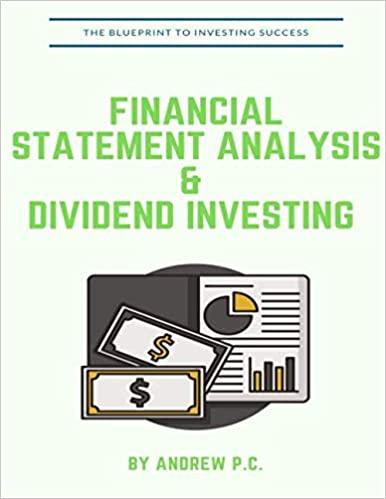Question
Question 1 (50%) Assume that Mr Somebody is a financial investor, whose wealth is given by 1. Mr Somebody has invested 100% of their wealth
Question 1 (50%)
Assume that Mr Somebody is a financial investor, whose wealth is given by 1. Mr Somebody has invested 100% of their wealth in an asset, call it Alpha, whose return is usually 16 per unit of wealth invested. However, there is a positive probability, call it , that Alphas return will collapse to 0. The table below illustrates Alphas returns in the two relevant states of the world along with the corresponding probability with which each states occurs (for simplicity, two states of the world are assumed throughout).
| State | 1 of | the world | (prob. ) | State | 2 of | the | world (prob. | 1 | ) | ||
| Alphas returns invested) | (per | 0 | 16 |
Suppose that Mr Somebody is an expected utility maximiser with expected utility function given by () = where denotes the market value of Mr Somebodys assets.
- Assume that = 0.25
- [12 pts]
(b) Resume the assumption that Mr Somebodys risk preferences are represented by the expected utility function () = , and continue to assume that = 0.25 . Suppose that a second asset becomes available: call it Beta. Betas return is equal to x, with probability , and 4, with probability 1 , where x is a non-negative real number. The following table summarises the relevant information.
| State 1 of the world (prob. ) | State 2 of the world (prob. 1 ) | |
| Alphas returns (per invested) | 0 | 16 |
| Betas returns (per invested) | x | 4 |
Mr Somebody has now the opportunity to either invest 100% of their wealth in Alpha, invest 100% of their wealth in Beta, or diversify their portfolio by investing fraction of their wealth in Alpha and a fraction of their wealth in Beta. Specifically, let [0,1] denote the fraction of Mr Somebodys wealth invested in the Alpha asset and 1 the fraction of Mr Somebodys wealth invested in the Beta asset. As indicated in the table above, continue to assume that there are only two relevant states of the world (state 1 and state 2).
- Work out Mr Somebodys optimal diversification strategy as a function of x.
- For what values of x, would Mr Somebody like to invest 100% of their wealth in the Alpha asset? And in the Beta asset?
- Calculate the correlation coefficient between the returns of the Alpha asset and the returns of the Beta asset in two cases: (1) when x=0 and (2) when x=20. Compare the correlation coefficients calculated in these two cases with the
- ptimal diversification strategy you derived in a previous sub-question. Are these related in a way that you expect? Comment.
- [10pts]
- ptimal diversification strategy you derived in a previous sub-question. Are these related in a way that you expect? Comment.
In answering the above make sure you fully explain your reasoning.
Step by Step Solution
There are 3 Steps involved in it
Step: 1

Get Instant Access to Expert-Tailored Solutions
See step-by-step solutions with expert insights and AI powered tools for academic success
Step: 2

Step: 3

Ace Your Homework with AI
Get the answers you need in no time with our AI-driven, step-by-step assistance
Get Started


